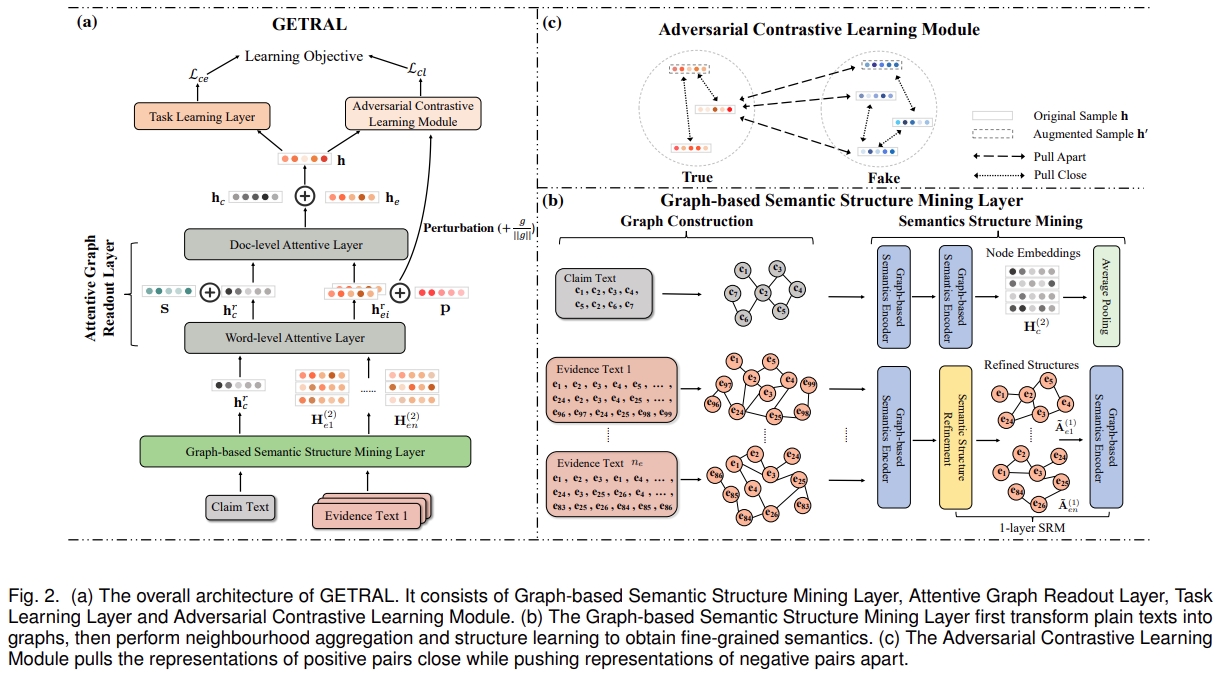Adversarial Contrastive Learning for Evidence-aware Fake News Detection with Graph Neural Networks
The prevalence and perniciousness of fake news have been a critical issue on the Internet, which stimulates the development of automatic fake news detection in turn. In this paper, we focus on evidence-based fake news detection, where several evidences are utilized to probe the veracity of news (i.e., a claim). Most previous methods first employ sequential models to embed the semantic information and then capture the claim-evidence interaction based on attention mechanisms. Despite their effectiveness, they still suffer from three weaknesses. Firstly, sequential models fail to integrate the relevant information that is scattered far apart in evidences. Secondly, they underestimate much redundant information in evidences may be useless or harmful. Thirdly, insufficient data utilization limits the separability and reliability of representations captured by the model. To solve these problems, we propose a unified Graph-based sEmantic structure mining framework with ConTRAstive Learning, namely GETRAL in short. Specifically, we first model claims and evidences as graph-structured data to capture the long-distance semantic dependency. Consequently, we reduce information redundancy by performing graph structure learning. Then the fine-grained semantic representations are fed into the claim-evidence interaction module for predictions. Finally, an adversarial contrastive learning module is applied to make full use of data and strengthen representation learning. Comprehensive experiments have demonstrated the superiority of GETRAL over the state-of-the-arts and validated the efficacy of semantic mining with graph structure and contrastive learning.
PDF Abstract



